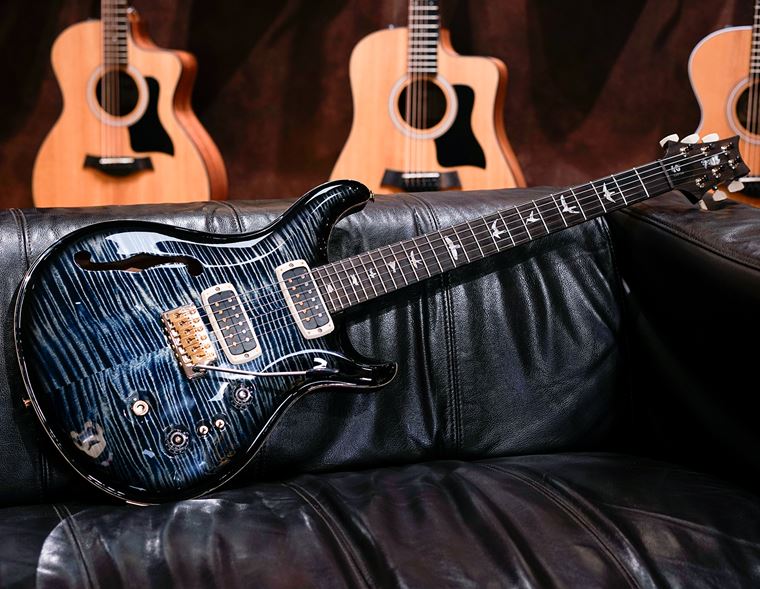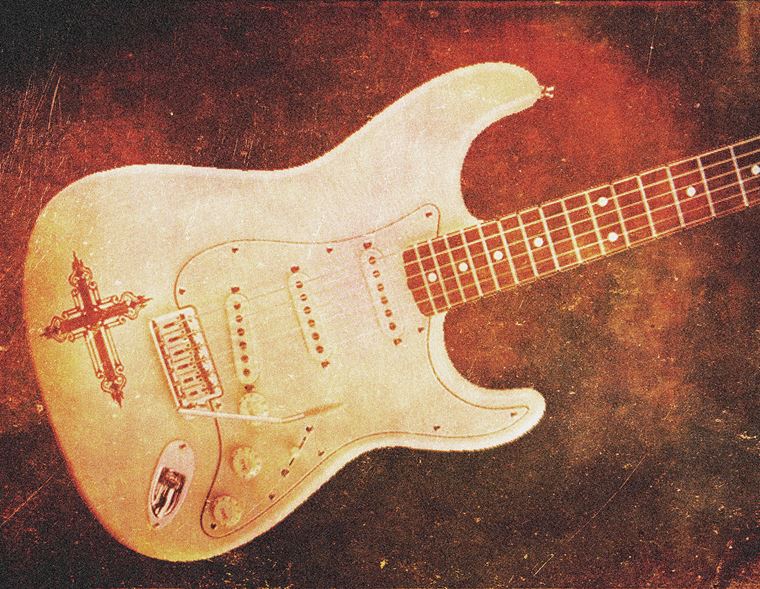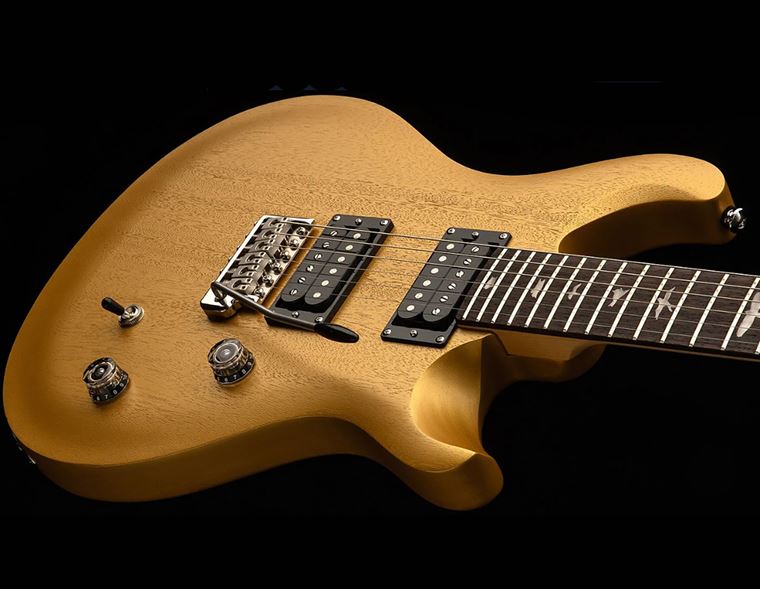Guitar String Gauges: Which Should I Choose?
How often do you think about guitar strings? Maybe you’re a beginner and the subject is completely new to you; maybe you’re an experienced player who fancies a change, or has new requirements? Whatever reason has led you here, let me shed some light on the subject of guitar strings.
As a guitarist, I’ve experimented a lot with string gauges over the years. Professionally, I’ve set up and altered many guitars, and I’ve also spoken to a lot of famous players (Vai, Satriani, Bonamassa etc) about guitar strings, so it’s a subject I’m pretty well versed on.
Today, I’ll guide you through the various choices and options that are available to you as a guitarist. I’ll cover both electric and acoustic guitars, so that you can make the most informed choice about guitar strings!

Contents
- Standard String Gauges
- Scale Length
- Light or Heavy?
- Hybrid Sets
- Half Gauges
- String Gauges at a Glance
- Acoustic Guitar Strings
- Do I need to Adjust my Guitar if I Change String Gauge?
- Which Strings Should I Pick?
- What String Brand Should I Go For?
- You Do You
Standard String Gauges
To begin with, I’ll outline the more traditional string gauges that you’ll tend to find on most guitars. Overwhelmingly, most electric guitars are sold with what we call ‘gauge 9’ or ‘gauge 10’ strings. Gauge 9 strings have a 0.009” string for the lightest string - the high E - and normally a 0.042” for the low E. Thus, we talk about a 9-42 set, or gauge 9 strings.
Gauge 10 strings, by the same convention, are typically 10-46. There are differences, but we’ll get to those!
Acoustic guitars are typically sold with gauge 12 strings. The lowest string in a set of gauge 12s can actually vary, but we’re generally talking about a 0.052” or 0.053” at the bottom. So, we talk about 12-52 or 12-53 for this gauge, which is considered ‘light’ for an acoustic guitar.
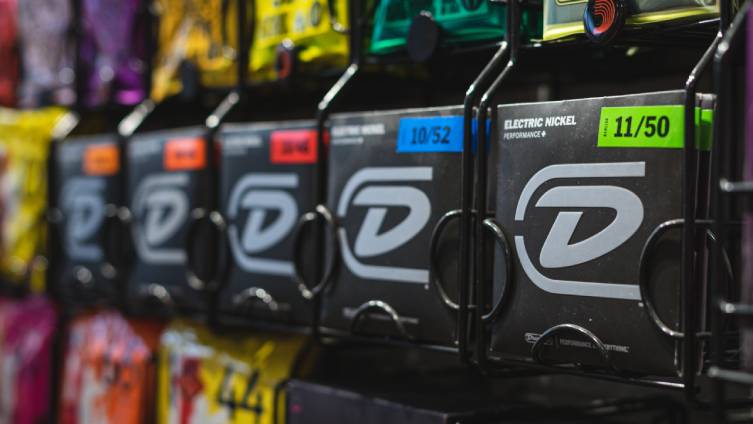
Why are these gauges the ones we tend to find? Simply put, they are well balanced and relatively easy to play, so they make the guitars they are strung on feel good. Speaking very generally, guitars with a ‘Gibson scale length’ tend to be strung with tens (10-46), whilst those with a Fender gauge often come strung with nines (9-42).
Need to know more about scale length? Read on!
Scale Length
A guitar’s scale length is basically the length of ‘playable’ string, from the bridge to the nut. It’s measured in inches and thanks to Fender, the most regular scale length for electric guitars is 25.5”. Tons of companies use this scale length, to the extent that I’d refer to this as ‘standard’ for the industry.
Gibson do things differently, with a smaller scale length of 24.75”. It doesn’t sound like much but that actually makes a big difference to the feel of a guitar. Since Gibson are the other biggest and most influential brand, hundreds of other brands also adopt this scale length too. I’d not call this short scale - you have to go to Fender’s student models (Mustang etc) of 24” for that - but more the ‘other normal’ scale length.
In terms of strings, we tend to see slightly heavier strings on the 24.75” scale length guitars because the heavier strings help retain the tension lost from the shorter neck. That doesn’t mean you have to stick to that! It’s just a prevailing reason as to why new Fender-type guitars tend to have nines and Gibson-style instruments have tens.
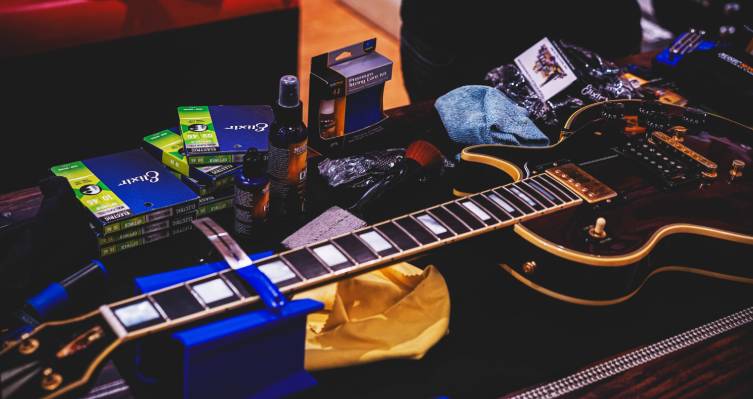
Light or Heavy?
A lot of this subject is down to personal preference, of course. Just because a guitar is fitted with gauge ten strings when you buy it is no reason to remain with tens if you don’t want them. Going lighter or heavier in gauge will have an immediate impact on how your guitar feels to play, and to a lesser degree, how it sounds.
Some people swear that heavier strings sound better and others (Rick Beato, for example, on his YouTube channel) claim that lighter strings actually sound better. For my own two pence' worth, I’ve never heard any monumental changes when moving from one string gauge to another, certainly nothing as significant as you’d get when, say, you change the settings on an amplifier. For me, the benefits/hindrances are far more to do with intonation, feel and certain techniques being easier or more difficult, depending on my string choice. But that’s just me!
If you find that the strings feel loose under your fingers, or that you are pulling notes sharp simply by fretting them, then you may need heavier strings. If, on the other hand, you find it difficult to perform string bends, or if holding down chords is painful, then it sounds like you need to get some lighter strings!
.jpg)
Hybrid Sets
Hybrid guitar sets are made up of strings that belong to different sets, most often utilising heavier lower strings. The two most popular examples of this are gauge 9-46 (gauge 9 with the lower strings of a gauge 10 set) and 10-52, which beef up the bottom strings actually beyond a standard set of elevens!
Hybrid sets are really good for players who use a lot of drop tunings like drop-D, and also for those who just focus more on low string riffing.
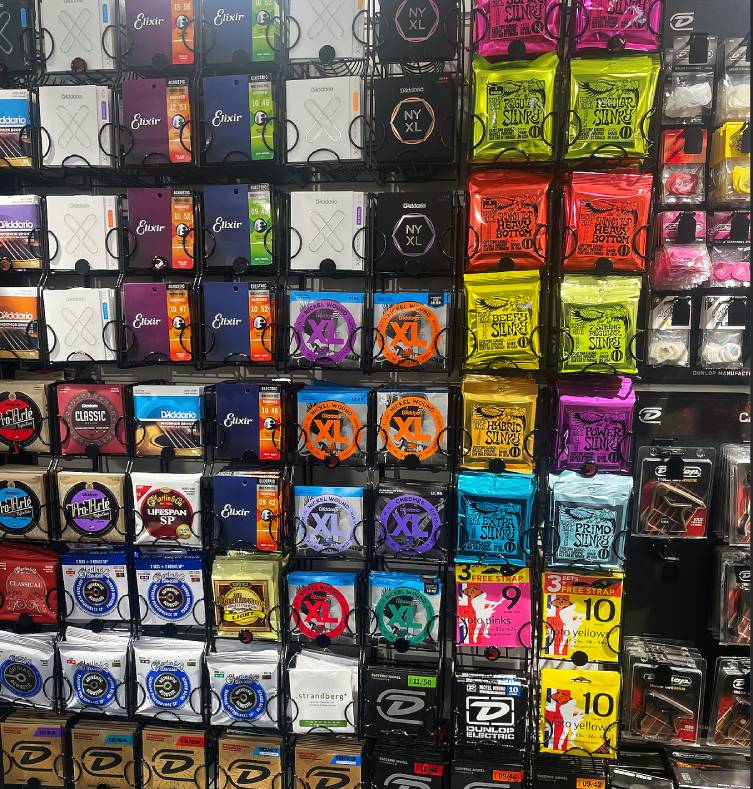
For players who tune all of their strings lower, it’s worth investigating these hybrid sets, too. If you play in C-Standard, let’s say, then you are likely to be using elevens or twelves on your guitar. Today, there are at least five different string sets to consider in that 11 to 12 bracket, with different thicknesses within each set: it’s not just about the lightest and heaviest strings! With the bottom string being anywhere between 48 and 62, however, it is worth assessing how your guitar feels with you playing at this tuning, and seeing if you could go lighter or heavier within that same gauge. If you use 11-48, for instance, and feel like the low string could do with being a little ‘tighter’ in response, then trying a set of strings that are 11-52 or 11-54 may improve your experience, without changing too much about the feel of the other strings.
Half Gauges
Half gauges are a relatively new phenomenon, and they serve to fill in the hinterland that exists between gauges. It seems a bit picky to need a gauge 9 and a half, but such a thing exists and they are actually quite excellent. Many players find 9s too light and 10s a bit stiff, so if this sounds like you, then gauge 8.5, 9.5 and 10.5 exist to let you really zone in on your ideal feel.
Is this overly picky? No, I’d say not. These string sets are all here for a reason, and if we can acknowledge how massively different plectrum thickness can affect our playing, then it stands to reason that string thickness is equally significant. It’s all important! We have more choice than ever, so there’s a better chance to get it all as right as possible for us.
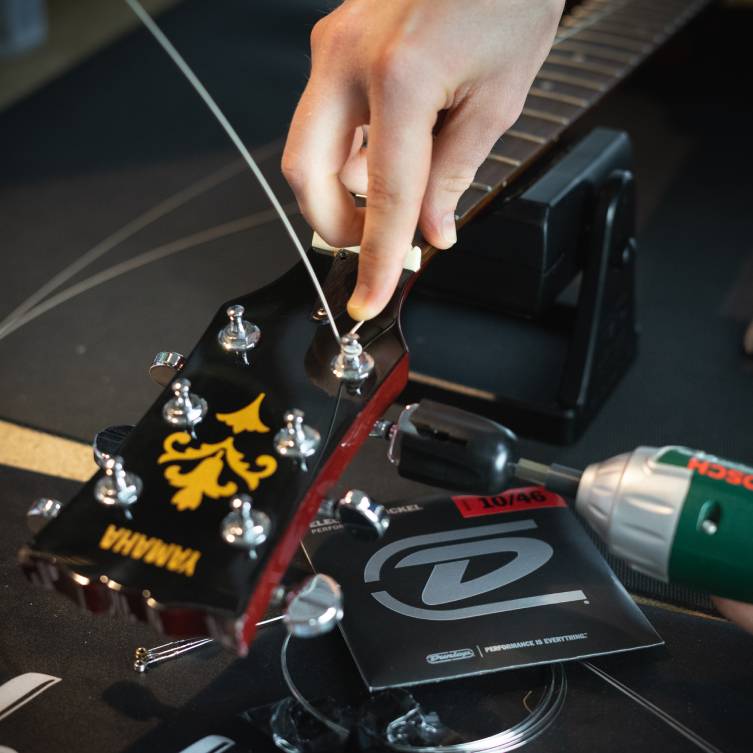
String Gauges at a Glance
Here, in a mostly complete but perhaps not exhaustive list, are the majority of string gauges that are out there at the moment. I’ll just stick with 6 string sets, since most extended range string sets (for 7, 8 and 9 string guitars) stick to these conventions and just add additional strings.
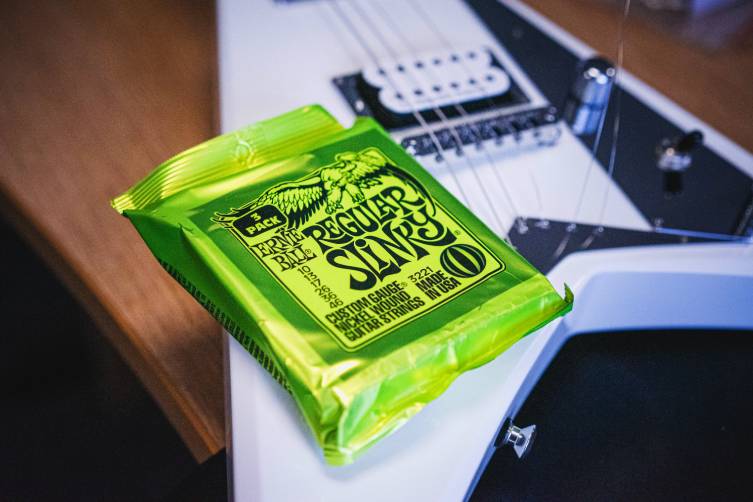
For clarity of reading, I’m going to omit the zeros and decimal points, so 0.009 - 0.042 will just be written as 9-42. Where appropriate, I’ll also leave notes about certain gauges. Sound good?
- 7 - 36 - about as thin as strings can conceivably get. Billy Gibbons loves these.
- 8 - 38 - lots of shredders like gauge 8 strings, as does Brian May and Jimmy Page.
- 8.5 - 40
- 9 - 42 - standard nines, second best-selling gauge behind 10 - 46.
- 9 - 46 - a nice compromise for weightier riffs, still nice and easy for solos.
- 9.5 - 44 - one of the first hybrid gauges, very popular with the blues rock brigade.
- 9.5 - 46
- 10 - 46 - standard tens, the most popular gauge by a mile.
- 10 - 48
- 10 - 52 - very popular for Drop-D tuning on 24.75” scale lengths.
- 10.5 - 48
- 10.5 - 52
- 10 - 54
- 11 - 48 - standard elevens. Popular choice for jazz players.
- 11 - 52
- 11 - 54 - A good choice for D Standard and Drop C tunings.
- 12 - 56
- 12 - 62 - Properly heavy; almost into Stevie Ray Vaughan territory here!
Many of these gauges are recently invented hybrid gauges, and they are designed for specific playing styles and tunings. This means that not all string sets are ‘balanced’ in the same way, meaning that the tension from string to string will differ, particularly if you use standard tuning.
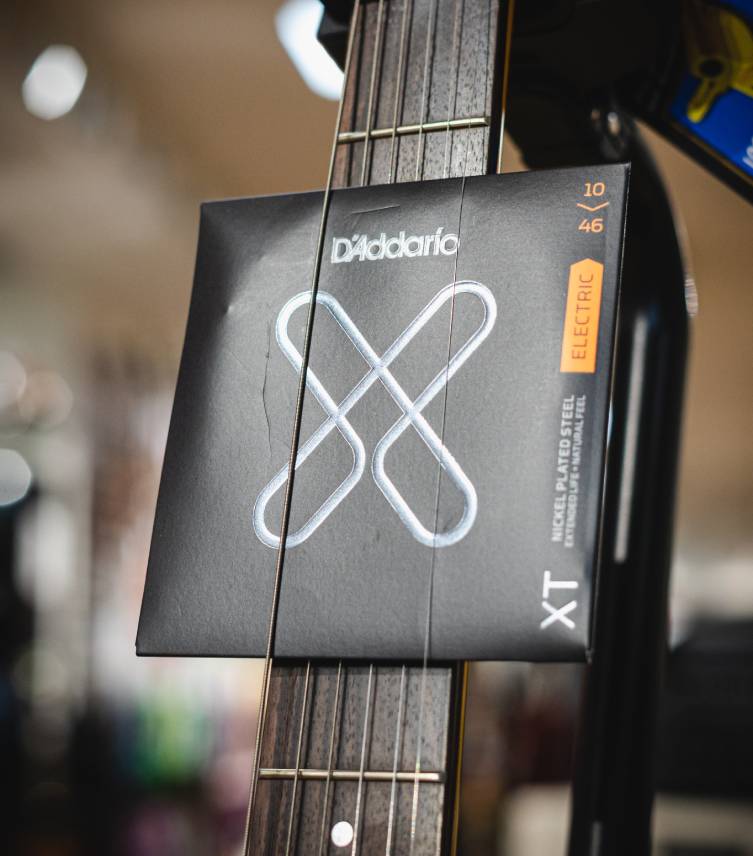
Acoustic Guitar Strings
Acoustic guitars are a little different. Generally, heavier gauge strings are preferred by most guitarists, with the most popular set being the 12-53 variety. Why heavier? Well, we don’t tend to bend strings and play those kinds of solos on an acoustic, so we don’t need light strings that facilitate that. Also, since an acoustic guitar is principally its own amplifier, we come down to basic physics: heavier strings create bigger vibrations, which in turn create more energy in the guitar’s body, which is then transformed into tone and volume. Lighter strings basically don’t work the guitar body hard enough to sound great.
Well, that’s the received wisdom at least, but let's remember that tone is all in the ears of the beholder. You may prefer the sound of lighter strings, or you may not hear a huge difference at all! Your fingers may prefer a lighter gauge, or they may enjoy the larger, tougher ringing of a heavier set.

Do I need to Adjust my Guitar if I Change String Gauge?
Yes, it’s likely that you will need to have your guitar adjusted if you change the string gauge. What’s required will depend on the guitar you play, but bridge adjustments and perhaps even a truss rod tweak are standard practice to compensate for the addition or reduction of tension from the strings.
As with all guitar maintenance, it’s all pretty easy when you know what you’re doing, but it’s also pretty easy to make a real mess of it if you don’t know! If in doubt, drop it in to your local tech and they’ll see you right.
Which Strings Should I Pick?
What should you be using? That’s hard for me to say, but I’d recommend beginning with a set of tens (10-46) at standard tuning on an electric guitar, and then determining how that set feels to you. It’s not the most popular gauge in the world for nothing, and a huge number of players swear by it.
I’m of the experience that your hands will tell you what you need to know, when it comes to guitar strings. It’s too simple to say that gauge ten is the ‘best’ - whatever that means - when you may be somebody who plays a number of different guitar models in a number of different styles. Different string gauges will likely apply here, and that’s why they exist, so don’t be discouraged from using different sets on different guitars!
I’ll use myself as an example here, since I suppose my tastes are fairly typical in many ways. Here are the string gauges I currently have on the instruments that crowd my dwelling:
- Les Paul: 10-52 (standard tuning, though I like using Drop-D on this guitar, so the 52 is nice at the bottom)
- ES-335: 11-54 (this guitar is in D standard and sometimes Drop-C tuning, so I need the extra heft!)
- Strat: 10-46 (standard tuning, feels great on the Strat)
- 7-string: 10-62 (this is the 7-string equivalent to the hybrid 10-52 gauge, extended for a 7-string guitar. For reference, mine has a regular 25.5” scale length, so it is neither extended range nor baritone)
- Charvel: 9-42 (this is a superstrat guitar with a locking Floyd Rose tremolo, and in my opinion feels best with a light gauge string, particularly in standard tuning)
- Acoustic: 12-53 (I’ve tried all sorts, and always head back to twelves!)
Hopefully that example helps illustrate how different string gauges can be incorporated. No player needs to defiantly stick to any one gauge any more than they have to stick to any one guitar!

What String Brand Should I Go For?
I’m not personally big on brand allegiance when it comes to strings. I’ve found very satisfactory results from all of the major brands: Ernie Ball, Dunlop, D’Addario, Elixir and Rotosound. More significantly, I’ve never had a particularly terrible experience nor a clearly much better one from any, either, so in my unbiased opinion, I kind of want to say that all of those brands are good choices. D’Addario make strings for a great many other brands, so it may be that when you choose some brand I’ve not mentioned, you’re actually still playing D’Addario!
Without being as flippant as saying ‘choose the packaging you like best’, I think the way to go is to choose what appeals to you, as long as they have the gauge you’re after. Ernie Ball are very hard to beat for choice, but that doesn’t mean they should be your automatic choice!
I also don’t want to sound like a ‘company guy’, but we are all guitarists here at guitarguitar, and we wouldn’t bother stocking any terrible string brands because it’s a massive waste of time and energy. Any strings you buy from guitarguitar will be good, so it’s just a matter of identifying the gauge you want.
You Do You
I hope this guide to string gauges has been helpful, and that you’ve been able to understand a little more about it all. It’s definitely not a case of just using a set of tens and forgetting about everything else! As I mentioned earlier, we guitarists have never been so spoiled for choice with string sets, so that allows us to get as exact a feel as we possibly can. Experiment, have fun and see if you can take your playing up a level by landing on the right string gauge for you!






